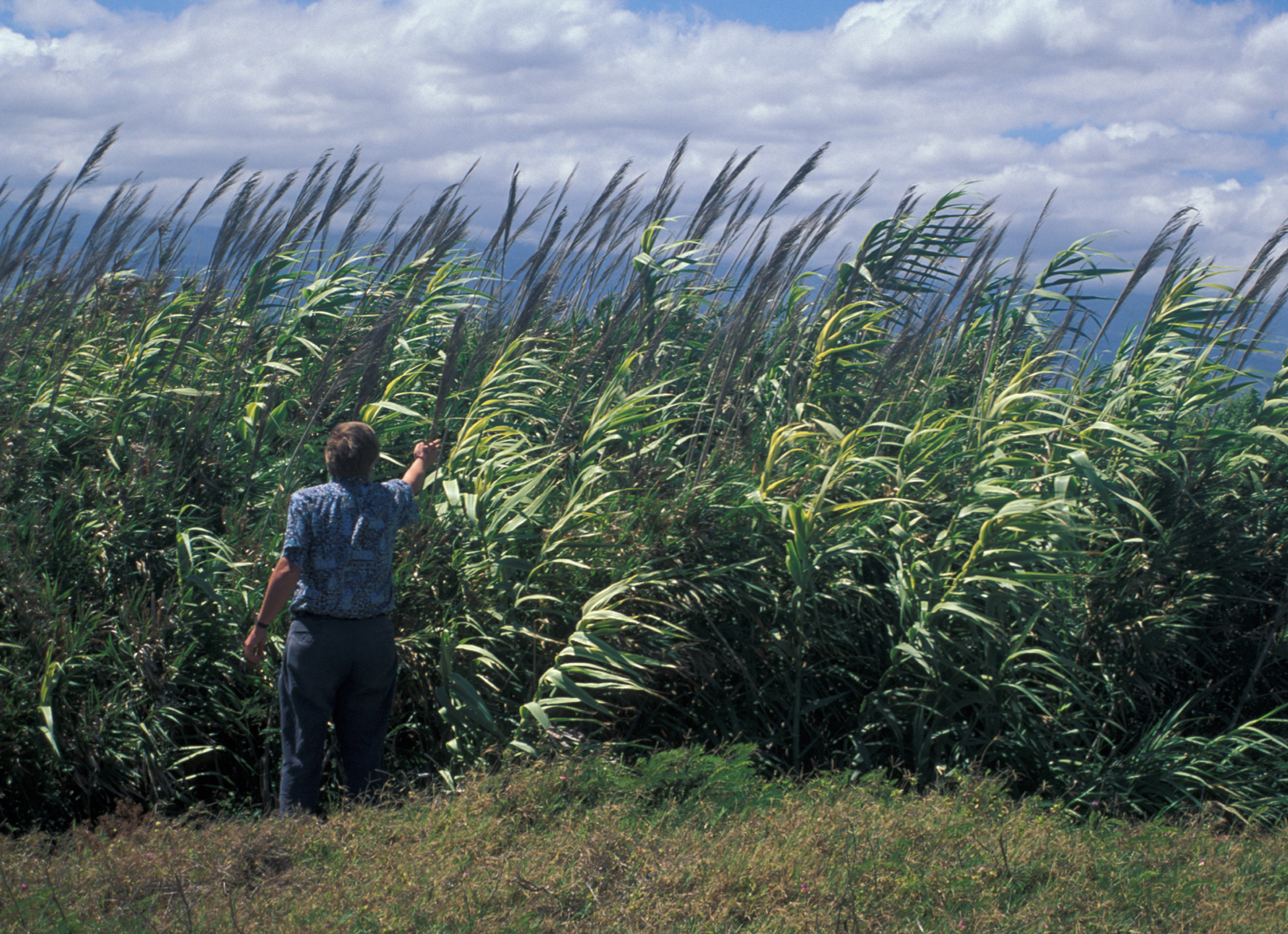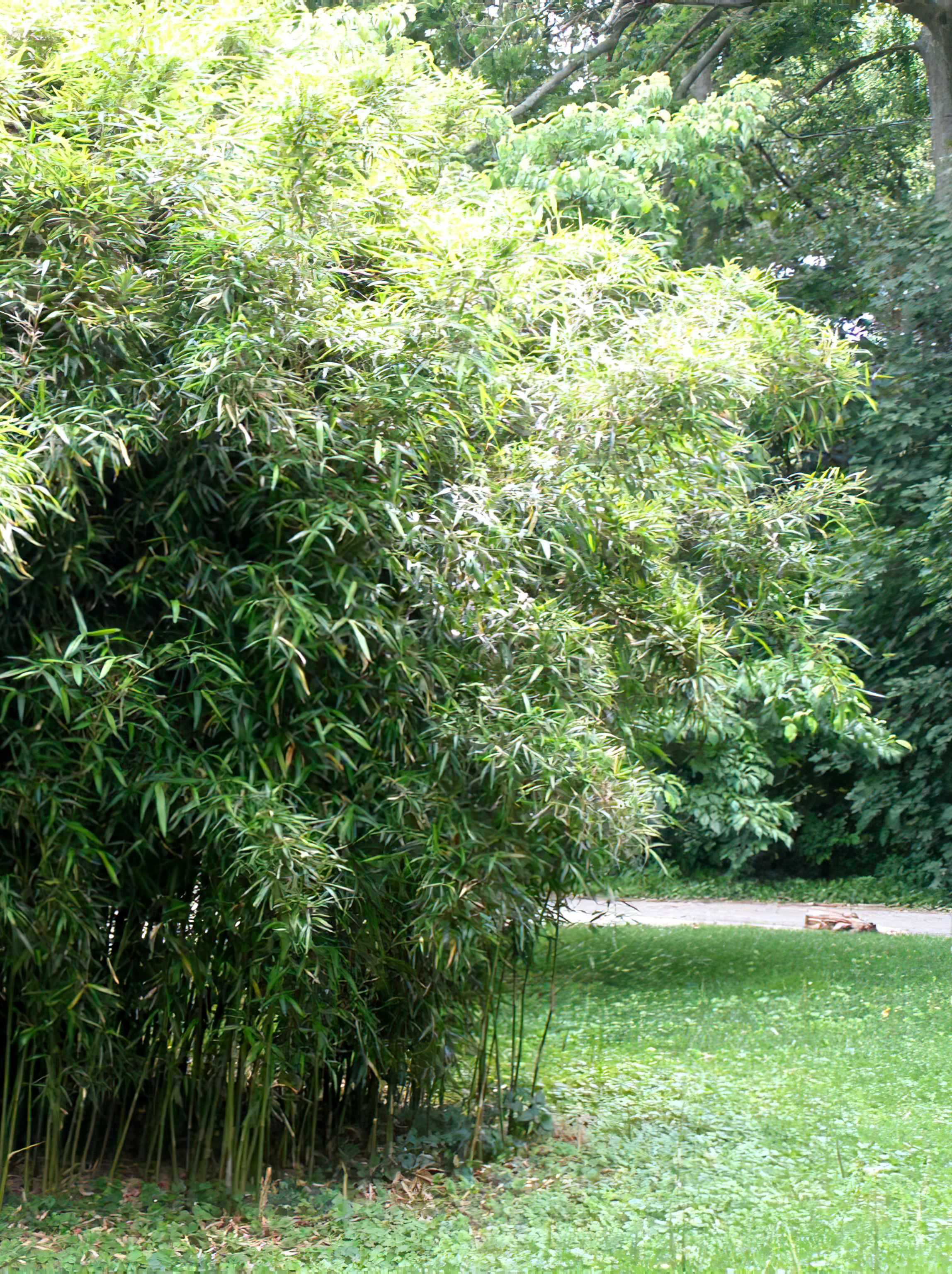|
Arundo
''Arundo'' is a genus of stout, perennial plants in the grass family. Description ''Arundo'' is native to southern Europe, North Africa, and much of temperate Asia as far east as Japan. They grow to 3–6 m tall, occasionally to 10 m, with leaves 30–60 cm long and 3–6 cm broad. ; Species * ''Arundo collina'' Ten. * ''Arundo donax'' L. – Giant cane, Spanish cane (south and east Mediterranean, to India; naturalised in many additional areas and often invasive) * ''Arundo formosana'' Hack. – Nansei-shoto, Taiwan, Philippines * ''Arundo mediterranea'' Danin – Mediterranean * ''Arundo micrantha'' Lam. – Mediterranean * ''Arundo plinii'' Turra – Pliny's reed – Greece, Italy, Albania, Croatia There are over 200 species once considered part of ''Arundo'' but now regarded as better suited to other genera: '' Achnatherum'', ''Agrostis'', '' Ammophila'', ''Ampelodesmos'', '' Arthrostylidium'', ''Arundinaria'', ''Austroderia'', ''Austrofestuca'', ''Ba ... [...More Info...] [...Related Items...] OR: [Wikipedia] [Google] [Baidu] |
Arundo Donax
''Arundo donax'' is a tall perennial cane. It is one of several so-called reed species. It has several common names including giant cane, elephant grass, carrizo, arundo, Spanish cane, Colorado river reed, wild cane, and giant reed. ''Arundo'' and ''donax'' are respectively the old Latin and Greek names for reed. ''Arundo donax'' grows in damp soils, either fresh or moderately saline, and is native to the Greater Middle East.CABI, 2020. Arundo donax (giant reed). In: Invasive Species Compendium. Wallingford, UK: CAB International. https://www.cabi.org/isc/datasheet/1940Global Invasive Species Database (2020) Species profile: Arundo donax. Downloaded from http://www.iucngisd.org/gisd/species.php?sc=112 on 12-01-2020. It has been widely planted and naturalised in the mild temperate, subtropical and tropical regions of both hemispheres, especially in the Mediterranean, California, the western Pacific and the Caribbean and is considered invasive in North America and Oceania.Perdue, R ... [...More Info...] [...Related Items...] OR: [Wikipedia] [Google] [Baidu] |
Arundo Formosana
''Arundo'' is a genus of stout, perennial plants in the grass family. Description ''Arundo'' is native to southern Europe, North Africa, and much of temperate Asia as far east as Japan. They grow to 3–6 m tall, occasionally to 10 m, with leaves 30–60 cm long and 3–6 cm broad. ; Species * ''Arundo collina'' Ten. * ''Arundo donax'' L. – Giant cane, Spanish cane (south and east Mediterranean, to India; naturalised in many additional areas and often invasive) * ''Arundo formosana'' Hack. – Nansei-shoto, Taiwan, Philippines * ''Arundo mediterranea'' Danin – Mediterranean * ''Arundo micrantha'' Lam. – Mediterranean * ''Arundo plinii'' Turra – Pliny's reed – Greece, Italy, Albania, Croatia There are over 200 species once considered part of ''Arundo'' but now regarded as better suited to other genera: ''Achnatherum'', ''Agrostis'', '' Ammophila'', ''Ampelodesmos'', '' Arthrostylidium'', ''Arundinaria'', ''Austroderia'', ''Austrofestuca'', ''Bamb ... [...More Info...] [...Related Items...] OR: [Wikipedia] [Google] [Baidu] |
Arundo Micrantha
''Arundo'' is a genus of stout, perennial plants in the grass family. Description ''Arundo'' is native to southern Europe, North Africa, and much of temperate Asia as far east as Japan. They grow to 3–6 m tall, occasionally to 10 m, with leaves 30–60 cm long and 3–6 cm broad. ; Species * ''Arundo collina'' Ten. * ''Arundo donax'' L. – Giant cane, Spanish cane (south and east Mediterranean, to India; naturalised in many additional areas and often invasive) * ''Arundo formosana'' Hack. – Nansei-shoto, Taiwan, Philippines * '' Arundo mediterranea'' Danin – Mediterranean * '' Arundo micrantha'' Lam. – Mediterranean * ''Arundo plinii'' Turra – Pliny's reed – Greece, Italy, Albania, Croatia There are over 200 species once considered part of ''Arundo'' but now regarded as better suited to other genera: '' Achnatherum'', '' Agrostis'', '' Ammophila'', ''Ampelodesmos'', '' Arthrostylidium'', ''Arundinaria'', ''Austroderia'', ''Austrofestuca'', ... [...More Info...] [...Related Items...] OR: [Wikipedia] [Google] [Baidu] |
Arundo Mediterranea
''Arundo'' is a genus of stout, perennial plants in the grass family. Description ''Arundo'' is native to southern Europe, North Africa, and much of temperate Asia as far east as Japan. They grow to 3–6 m tall, occasionally to 10 m, with leaves 30–60 cm long and 3–6 cm broad. ; Species * ''Arundo collina'' Ten. * ''Arundo donax'' L. – Giant cane, Spanish cane (south and east Mediterranean, to India; naturalised in many additional areas and often invasive) * ''Arundo formosana'' Hack. – Nansei-shoto, Taiwan, Philippines * '' Arundo mediterranea'' Danin – Mediterranean * ''Arundo micrantha'' Lam. – Mediterranean * ''Arundo plinii'' Turra – Pliny's reed – Greece, Italy, Albania, Croatia There are over 200 species once considered part of ''Arundo'' but now regarded as better suited to other genera: '' Achnatherum'', '' Agrostis'', '' Ammophila'', ''Ampelodesmos'', '' Arthrostylidium'', ''Arundinaria'', ''Austroderia'', ''Austrofestuca'', ... [...More Info...] [...Related Items...] OR: [Wikipedia] [Google] [Baidu] |
Arundo Collina
''Arundo'' is a genus of stout, perennial plants in the grass family. Description ''Arundo'' is native to southern Europe, North Africa, and much of temperate Asia as far east as Japan. They grow to 3–6 m tall, occasionally to 10 m, with leaves 30–60 cm long and 3–6 cm broad. ; Species * ''Arundo collina'' Ten. * ''Arundo donax'' L. – Giant cane, Spanish cane (south and east Mediterranean, to India; naturalised in many additional areas and often invasive) * ''Arundo formosana'' Hack. – Nansei-shoto, Taiwan, Philippines * ''Arundo mediterranea'' Danin – Mediterranean * ''Arundo micrantha'' Lam. – Mediterranean * ''Arundo plinii'' Turra – Pliny's reed – Greece, Italy, Albania, Croatia There are over 200 species once considered part of ''Arundo'' but now regarded as better suited to other genera: ''Achnatherum'', ''Agrostis'', '' Ammophila'', ''Ampelodesmos'', '' Arthrostylidium'', ''Arundinaria'', ''Austroderia'', ''Austrofestuca'', ''Bamb ... [...More Info...] [...Related Items...] OR: [Wikipedia] [Google] [Baidu] |
Arundo Plinii
''Arundo plinii'' is a species of herb in the family Poaceae Poaceae () or Gramineae () is a large and nearly ubiquitous family of monocotyledonous flowering plants commonly known as grasses. It includes the cereal grasses, bamboos and the grasses of natural grassland and species cultivated in lawns an ... (True grasses). Sources References Flora of Malta Arundinoideae {{Poaceae-stub ... [...More Info...] [...Related Items...] OR: [Wikipedia] [Google] [Baidu] |
Arundinaria
''Arundinaria'' is a genus of bamboo in the grass family the members of which are referred to generally as cane. ''Arundinaria'' is the only bamboo native to south and southeastern North America, with a native range from Maryland south to Florida and west to the southern Ohio Valley and Texas. Within this region they are found from the Coastal Plain to medium elevations in the Appalachian Mountains. Arundinaria species have running rhizomes and have slender, woody culms that reach heights from . ''Arundinaria'' produce seeds only rarely and usually reproduce vegetatively, forming large clonal genets. When seed production does occur, the colony usually dies afterwards, possibly because the dense thickets of a mature canebrake would otherwise prevent seedling establishment. Only two flowering events are known for A. appalachiana. Among the distinctive features of the canes is a fan-like cluster of leaves at the top of new stems called a topknot, so-called because of its resemblan ... [...More Info...] [...Related Items...] OR: [Wikipedia] [Google] [Baidu] |
Poaceae
Poaceae () or Gramineae () is a large and nearly ubiquitous family of monocotyledonous flowering plants commonly known as grasses. It includes the cereal grasses, bamboos and the grasses of natural grassland and species cultivated in lawns and pasture. The latter are commonly referred to collectively as grass. With around 780 genera and around 12,000 species, the Poaceae is the fifth-largest plant family, following the Asteraceae, Orchidaceae, Fabaceae and Rubiaceae. The Poaceae are the most economically important plant family, providing staple foods from domesticated cereal crops such as maize, wheat, rice, barley, and millet as well as feed for meat-producing animals. They provide, through direct human consumption, just over one-half (51%) of all dietary energy; rice provides 20%, wheat supplies 20%, maize (corn) 5.5%, and other grains 6%. Some members of the Poaceae are used as building materials (bamboo, thatch, and straw); others can provide a source of biofuel, ... [...More Info...] [...Related Items...] OR: [Wikipedia] [Google] [Baidu] |
Ampelodesmos
''Ampelodesmos'' is a genus of Mediterranean plants in the grass family, which is known by the common names stramma, Mauritania grass, rope grass, and dis(s) grass. It is classified in its own tribe Ampelodesmeae within the grass subfamily Pooideae. The genus probably originated through ancient hybrid speciation, as a cross between parents from tribes Stipeae and Phaenospermateae. ''Ampelodesmos mauritanicus'' is a large clumping perennial bunchgrass, which is native to the Mediterranean region. It has been introduced outside its native range and is cultivated as an ornamental grass. Its nodding flower panicles can be nearly two feet long. In its native area it is used as a fiber for making mats, brooms, and twine. The plant can become an Invasive species in non-native ecosystems beyond the Mediterranean Basin. Its nodding flower panicles can be nearly two feet long. In its native area it is used as a fiber for making mats, brooms, and twine. The leaves of this grass are rea ... [...More Info...] [...Related Items...] OR: [Wikipedia] [Google] [Baidu] |
Austrofestuca
''Austrofestuca'', called beach fescue, is a genus of Australian and New Zealand plants in the grass family. The only accepted species is ''Austrofestuca littoralis'', native to seacoast regions in Australia (all states except Queensland) and New Zealand ( North I, South I, and Chatham Is). The genus used to include:Alexeev, Eugeniy Borisovich. 1985. Bjulleten Moskovskogo Obačestva Ispytatelej Prirody, Otdel Biologičeskij 90(5): 106–107, f. 1, 22–31 see ''Hookerochloa'' * ''Austrofestuca eriopoda'' – ''Hookerochloa eriopoda'' * ''Austrofestuca hookeriana'' – ''Hookerochloa hookeriana'' See also * List of Poaceae genera The true grasses ( Poaceae) are one of the largest plant families, with around 12,000 species and roughly 800 genera. They contain, among others, the cereal crop species and other plants of economic importance, such as the bamboos, and several i ... References Pooideae Grasses of Oceania Monotypic Poaceae genera Taxa named by Jacque ... [...More Info...] [...Related Items...] OR: [Wikipedia] [Google] [Baidu] |
Chionochloa ''
* ''Chionochloa pallida - ''Chionochloa'' is a genus of tussock grass in the family Poaceae, found primarily in New Zealand with one known species in New Guinea and another on Lord Howe Island (part of Australia). Some of the species are referred to as snowgrass. Most of the species in the genus grow in clumps, some up to 1.5 m tall. Red tussock dominates the tall tussock grasslands on the volcanic mountains of the North Island of New Zealand and can also be found in areas on the northern half of the South Island. Snow tussock, of which there are several species, can be found above the tree line together with other species. ; Species ; formerly included see ''Rytidosperma ''Rytidosperma'' is a genus of plants in the grass family. Most of the species occur in Australasia, with a few in insular Southeast Asia, southern South America (Chile + Argentina), and certain islands of the Pacific (Hawaii + Easter Island). [...More Info...] [...Related Items...] OR: [Wikipedia] [Google] [Baidu] |
Calamovilfa
''Calamovilfa'' is a genus of North American plants in the grass family native to the United States and Canada. ; Species * ''Calamovilfa arcuata'' K.E.Rogers - OK AL AR TN GA KY * ''Calamovilfa brevipilis'' (Torr.) Scribn. - NJ NC SCA VA * ''Calamovilfa curtissii'' (Vasey) Scribn. - Florida * ''Calamovilfa gigantea'' (Nutt.) Scribn. & Merr. - COL KS NE OK AZ UT NM TX * ''Calamovilfa longifolia'' (Hook.) Scribn. - ABT BRC MAN SAS ONT COL ID MT WA WY IL IA KS MN MO ND NE SD WI IN MI NY OH PA NM ; formerly included see '' Cinna'' * ''Calamovilfa poiformis'' - syn of ''Cinna poiformis'' See also * List of Poaceae genera The true grasses ( Poaceae) are one of the largest plant families, with around 12,000 species and roughly 800 genera. They contain, among others, the cereal crop species and other plants of economic importance, such as the bamboos, and several i ... References Poaceae genera {{Chloridoideae-stub ... [...More Info...] [...Related Items...] OR: [Wikipedia] [Google] [Baidu] |

